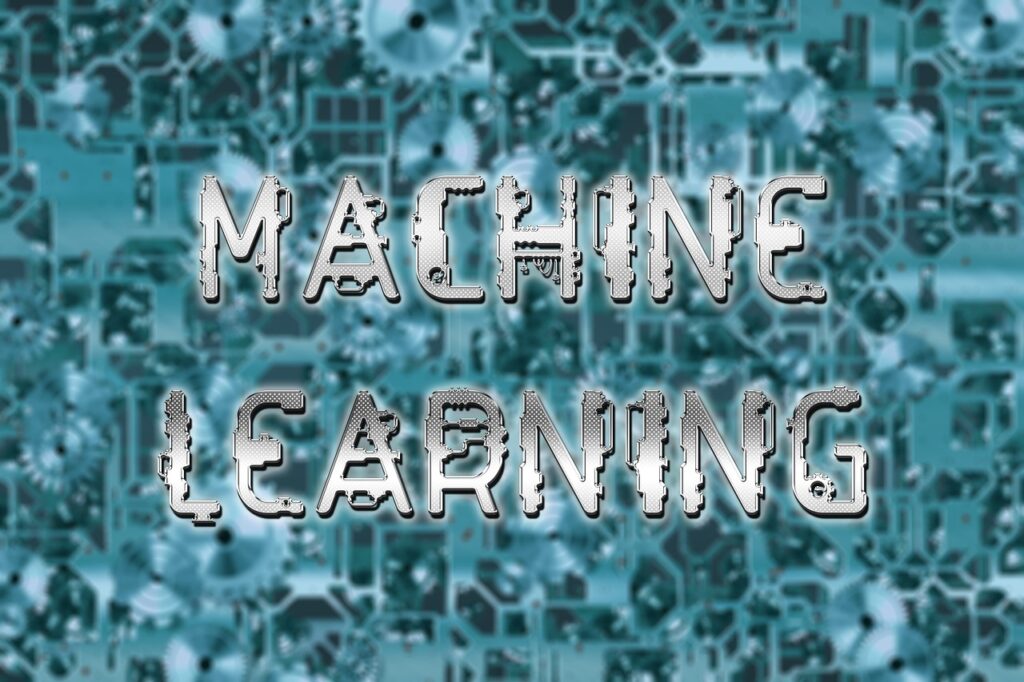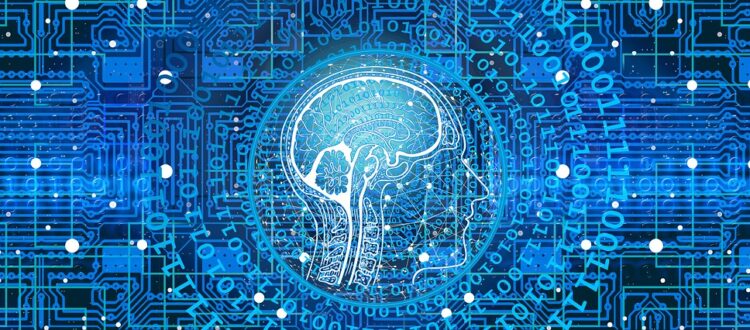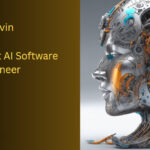Machine Learning 101: From Sci-Fi to Reality in 5 Easy Steps
Introduction - Machine Learning
Machine learning (ML) has become ubiquitous in our daily lives, quietly shaping our experiences from the moment we wake up to the second we drift off to sleep. From the personalized recommendations on your favorite streaming service to the spam filter shielding your inbox, ML algorithms are constantly working behind the scenes. But what exactly is machine learning, and how does it work? This comprehensive guide will delve into all aspects of ML, making even the most complex concepts understandable.
Unveiling the Core: What is Machine Learning?
At its core, machine learning is a field of computer science that allows computers to learn without explicit programming. Traditional programming involves writing detailed instructions for a computer to follow. In contrast, ML algorithms learn from data, identifying patterns and relationships that allow them to make predictions or decisions on new, unseen data. This ability to learn and adapt is what makes machine learning so powerful and versatile.
Here’s a breakdown of the key components of ML:
- Data: The lifeblood of ML. Algorithms learn from data, which can be structured (e.g., tables in databases) or unstructured (e.g., text, images). The quality and quantity of data significantly impact the performance of an ML model.
- Algorithms: The heart of the learning process. These are mathematical models that analyze data and extract patterns. Common ML algorithms include linear regression, decision trees, and neural networks.
- Models: The output of the learning process. Once trained on data, algorithms become models capable of making predictions or decisions on new data.
The Learning Journey: Unveiling Different Types of ML
Machine learning can be categorized into three main learning paradigms based on how an algorithm interacts with data:
- Supervised Learning: In this paradigm, the data is labeled, meaning each data point has a corresponding output or target value. The algorithm learns the relationship between the input features and the desired output, enabling it to predict the output for new, unseen data points. Common examples include classification (e.g., spam filtering) and regression (e.t., predicting housing prices).
- Unsupervised Learning: Here, the data is unlabeled, with no predefined target values. The algorithm seeks to identify hidden patterns or structures within the data. This approach is useful for tasks like customer segmentation, anomaly detection, and dimensionality reduction.
- Reinforcement Learning: In this method, the algorithm interacts with an environment and learns through trial and error. It receives rewards or penalties based on its actions, allowing it to optimize its behavior over time. Reinforcement learning is often used in developing self-playing games and autonomous robots.
A Walk Through Time: A Historical Perspective on Machine Learning
The story of machine learning is a captivating journey that intertwines human curiosity about intelligence with the relentless pursuit of technological advancements. While the applications of machine learning are undeniably modern, its roots can be traced back further than you might expect.
Early Beginnings (1940s-1950s):
- 1943: The seeds of machine learning were sown with the publication of a groundbreaking paper titled “A Logical Calculus of the Ideas Immanent in Nervous Activity” by Warren McCulloch and Walter Pitts. This paper introduced the concept of artificial neural networks, a foundational principle in machine learning.
- 1949: Donald Hebb’s book, “The Organization of Behavior,” further fueled the exploration of neural networks and their connection to human learning processes.
- 1950s: Alan Turing’s Turing Test, proposed in 1950, established a benchmark for evaluating a machine’s ability to exhibit intelligent behavior equivalent to, or indistinguishable from, that of a human.
- 1952: Arthur Samuel, often credited as the father of machine learning, developed a checkers-playing program that learned and improved through gameplay. This marked the introduction of the term “machine learning” and demonstrated the potential for computers to learn from experience.
- 1957: Frank Rosenblatt, inspired by the human brain, designed the perceptron, a rudimentary artificial neural network. Although limitations in computing power hindered its initial success, the perceptron paved the way for future advancements in neural networks.
From Promise to Peril and Back Again (1960s-1980s):
- 1960s: The 1960s witnessed a surge of optimism and funding for AI research, including machine learning. However, limitations in computational power and theoretical understanding led to a period of disillusionment by the late 1960s, often referred to as the “AI Winter.”
- 1967: Amidst the challenges, the Nearest Neighbor algorithm emerged, marking a significant step forward in pattern recognition, a crucial aspect of machine learning.
Resurgence and The Rise of Modern Machine Learning (1990s-Present):
- 1990s: The 1990s saw a resurgence of interest in machine learning, fueled by advancements in computing power and the development of new algorithms like Support Vector Machines (SVMs) and decision trees. The focus shifted from achieving artificial general intelligence (AGI) to tackling specific, solvable problems.
- 1997: Deep Blue, an IBM chess computer powered by machine learning, defeated Garry Kasparov, the reigning world chess champion, in a historic match. This victory showcased the immense potential of machine learning.
- 2000s: The explosion of data in the digital age further propelled machine learning. The availability of vast amounts of data, combined with the increasing power of computers, led to the development of more sophisticated algorithms, including deep learning models.
- 2010s-Present: Deep learning has revolutionized machine learning, achieving breakthroughs in image recognition, natural language processing, and other domains. Cloud computing has also democratized access to machine learning tools, making them more accessible to businesses and individuals.
The journey of machine learning is far from over. As we move forward, researchers are constantly exploring new frontiers, such as explainable AI (XAI) to make models more interpretable and advancements in hardware specifically designed for machine learning tasks. The future holds immense promise for machine learning to continue shaping our world in profound ways.
Under the Hood: Unveiling the Training Process
Training an ML model is an iterative process that involves several steps:
- Data Collection and Preprocessing: Relevant data is collected, cleaned, and prepared for the chosen algorithm. This may involve handling missing values, normalization, and feature engineering (creating new features from existing ones).

- Model Selection: The appropriate algorithm is chosen based on the task and data characteristics. Different algorithms excel in different tasks.
- Model Training: The algorithm is presented with the training data, allowing it to learn the underlying patterns and relationships. This process may involve tuning hyperparameters (settings that control the algorithm’s behavior) to optimize performance.
- Model Evaluation: The trained model is evaluated on a separate test dataset to assess its accuracy andgeneralizability (ability to perform well on unseen data).
- Model Deployment: If the model performs well, it is deployed to a production environment where it can make predictions or decisions on real-world data.
Beyond the Basics: Advanced Concepts in Machine Learning
The world of ML extends far beyond the fundamentals. Here are some advanced concepts that are pushing the boundaries of what’s possible:
- Deep Learning: A subfield of ML inspired by the structure and function of the human brain. Deep learning models, also known as artificial neural networks, consist of multiple layers of interconnected nodes that process information in a hierarchical fashion. These models have achieved remarkable success in tasks like image recognition, natural language processing, and machine translation.
- Ensemble Learning: An approach that combines multiple weaker models to create a single, more robust model. This technique leverages the strengths of different models to improve overall accuracy andgeneralizability.
- Explainable AI (XAI): As ML models become more complex, understanding their decision-making process becomes crucial. XAI techniques aim to make models more interpretable, allowing us to understand how they arrive at their predictions.
The Real-World Impact: Applications of Machine Learning
Machine learning is revolutionizing various industries and aspects of our lives. Here are just a few examples:
- Healthcare: ML is used for disease diagnosis, drug discovery, and personalized medicine.
- Finance: Fraud detection, risk assessment, and algorithmic trading all leverage ML.
- Retail and E-commerce: Recommendation engines, targeted advertising, and product search personalization are powered by ML.
- Manufacturing: Predictive maintenance, quality control, and process optimization utilize ML algorithms.
- Transportation: Self-driving cars, traffic prediction, and logistics optimization rely heavily on ML.
- Entertainment: Movie and music recommendations, personalized content creation, and even game development leverage ML.
The Ethical Considerations: Challenges and Biases in Machine Learning
While ML holds immense potential, it’s not without challenges. Here are some key considerations:
- Bias: Machine learning models can perpetuate societal biases if the data they are trained on is biased. Mitigating bias requires careful data selection and algorithmic design.
- Explainability: Complex models can be difficult to understand, making it challenging to explain their decisions. XAI techniques are crucial for addressing this issue.
- Privacy: As ML algorithms handle sensitive data, ensuring data privacy and security is paramount. Regulations like GDPR (General Data Protection Regulation) are crucial for protecting user data.
The Future of Machine Learning: Looking Ahead
Machine learning is a rapidly evolving field with exciting possibilities on the horizon. Here are some trends to watch out for:
- The Rise of Explainable AI (XAI): As the demand for transparency and accountability grows, XAI techniques will become even more important, allowing us to trust and understand ML models better.
- The Democratization of Machine Learning: With advancements in cloud computing and AutoML (automated machine learning) tools, creating and deploying ML models will become more accessible to businesses and individuals without extensive technical expertise.
- Human-AI Collaboration: The future likely lies in a collaborative approach where humans and AI work together, leveraging each other’s strengths. Humans can provide the understanding of context and domain expertise, while AI can automate tasks and provide data-driven insights.
Machine learning is no longer a futuristic concept; it’s an integral part of our present. By understanding its core principles, applications, and challenges, we can harness the power of ML to create a better future for all.
In addition to the points mentioned above, here are some resources you might find helpful to delve deeper into specific aspects of machine learning:
- Online Courses: Platforms like Coursera, Udacity, and edX offer various online courses on machine learning, catering to beginners and experienced learners alike.
- Books: Several excellent books cover machine learning concepts in an accessible way. Popular choices include “Hands-On Machine Learning with Scikit-Learn, Keras & TensorFlow” by Aurélien Géron and “Machine Learning: A Probabilistic Perspective” by Kevin Murphy.
- Open Source Libraries: Powerful open-source libraries like TensorFlow, PyTorch, and scikit-learn provide tools and functionalities for building and deploying ML models.
Conclusion:
Machine learning is a fascinating and ever-evolving field. With a continuous thirst for knowledge and exploration, you can unlock its potential and contribute to shaping the future of this transformative technology.





Pingback : The Machine Muse LLMs: Transforming Text with Machine Minds